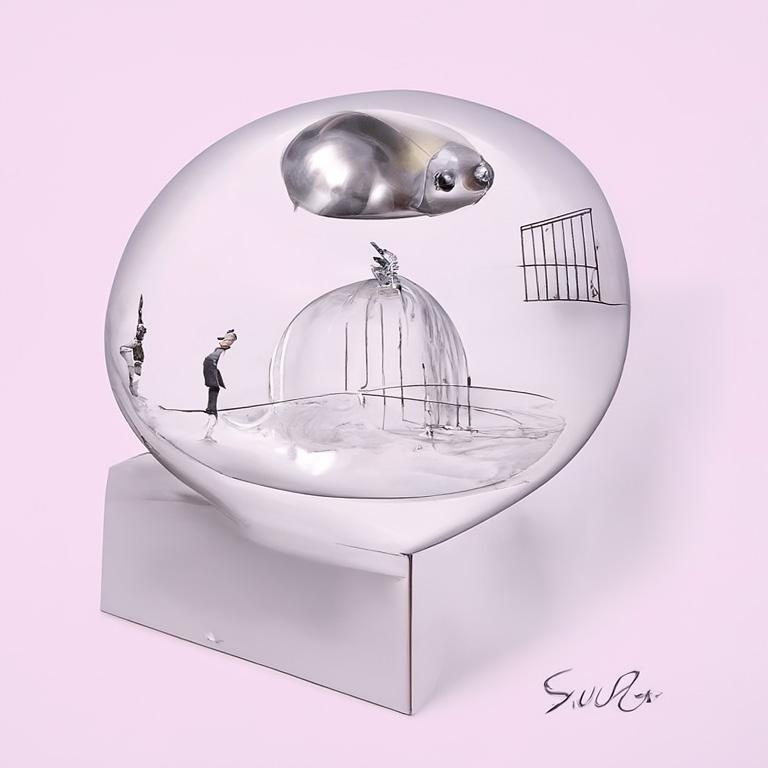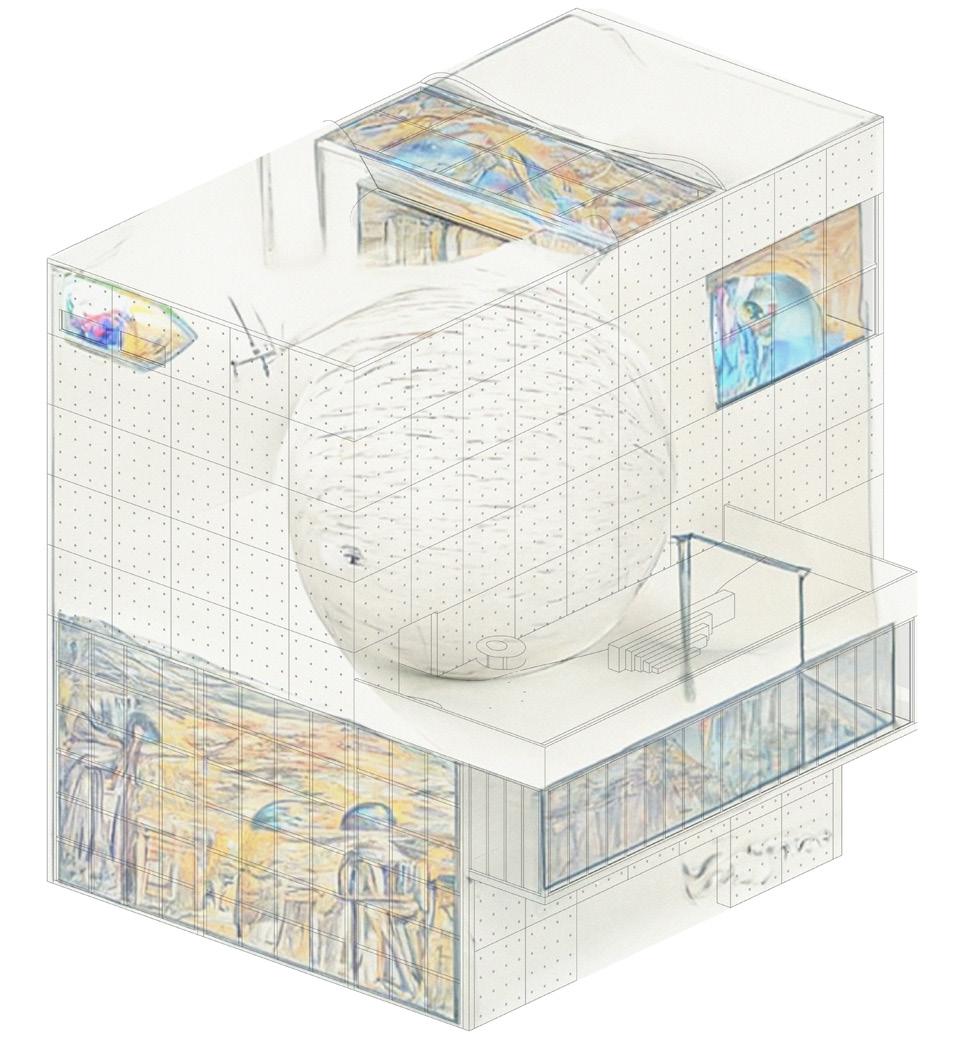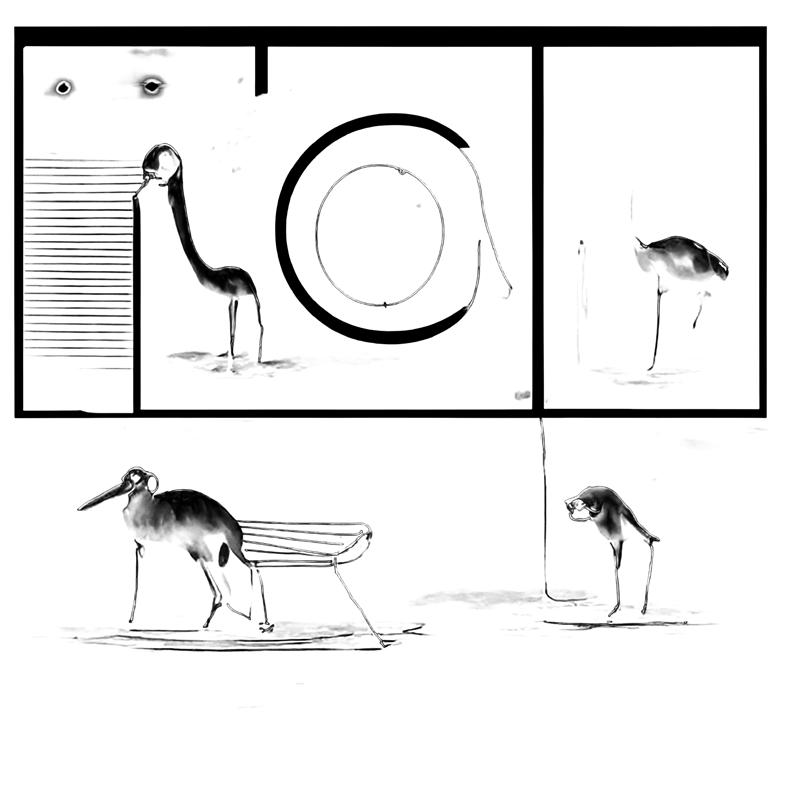



Torture Chamber
Do not go gentle into that good night, Old age should burn and rave at close of day; Rage, rage against the dying of the light.
-Dylan ThomasAesthetics serves a function. A function that can even be used for torture or rehabilitation. A series of secret cells and torture centres designed by Alphonse Laurencic are built in Barcelona in 1938.
In these coloured cells inspired by avant-garde art, beds were placed at a 20-degree angle, which makes them almost impossible to sleep on. The floors were paved with extruded bricks and blocks to prevent the prisoners to walk forward and backward. The avant-garde art became the skin and texture of this unpleasant sphere. The prisoner can do nothing but stare at the abstract art on the wall. Architecture as spheres, more or less, functions as a such machines for rehabilitation, just like the famous novel and movie – A Clockwork Orange.23 When asked about why he used this name for the novel, Anthony Burgess explained, “I’ve implied the junction of the organic, the lively, the sweet – in other words, life, the orange – and the mechanical, the cold, the disciplined. I’ve brought them together in this kind of an oxymoron, this sour-sweet word.”24
The Clockwork Orange is a surrealist mechanism that operates with technical objects in a symbolic way rather than in their own terms. The torture within it aims to rip open a gap inside the sphere to liberate the radical intrinsic value.
 Fg.5.1. “Psychotechnic” Torture : secret cells and torture centers built in Barcelona by Alphonse Laurencic.
22 Dylan Thomas, “Do not go gentle into that good night”. 23 Anthony Burgess, A Clockwork Orange. (Paw Prints, 2008).
Fg.5.1. “Psychotechnic” Torture : secret cells and torture centers built in Barcelona by Alphonse Laurencic.
22 Dylan Thomas, “Do not go gentle into that good night”. 23 Anthony Burgess, A Clockwork Orange. (Paw Prints, 2008).













































































Aufhebung or sublation, a dialectical process suggested by Hegal, can be used to create something truly new. For example, the opposite of “dead” is not “alive” but rather “undead” - a state that is neither “dead” nor “alive” but maintains its tensions between them. The result of the sublation is often uncanny, disturbing people. The art processes of Dadaism and Surrealism have a similar structure to the sublation process. A functional object of our everyday life but its function is suspended by the artist. It can longer function as a common apparatus. Yet, it lacks certain qualities to be perceived as a piece of “crafted art”. When it is put among other artworks in a gallery, it becomes the sacrilegious surrealist object that destroys the atmosphere. Perceivers will be discomforted, provoked and tortured by this surrealist object mentally and even physicially. Andre Breton writes in the Second Manifesto of Surrealism:

“The simplest Surrealist act consists of dashing down into the street, pistol in hand, and firing blindly, as fast as you can pull the trigger, into the crowd.” 25
The use of torture against the narrated everyday life breaks the latency between our spheres and opens up an authentic public space which influences the construction of our societies and works of art.





































ISOMETRIC DRAWING
Scale 1 : 300















The torture room aims to elaborate people from their “ko-isoliert” bubbles, so links between people and their milieu can be connected. Even though it disguises itself as a freely accessible space, a torture room employs a penetrable system that isolates the inside from the outside. In order to enter the torture room, the visitors must commit to certain rituals. A museum will require its visitors to be quiet with its acoustic quality of space. Besides, a certain dress code is often required to be followed – a principle that is often found in schools, hospitals, and prisons. The new art space is designed to make use of this ritual in a way of terror and torture. Just like the classic movie Willy Wonka & the Chocolate Factory26, each space is ligated with surrealist objects. Spaces inside are constantly mutated with different works of art. The logic inside the spaces is not guided by schematic design principles, but by a collective dream of ours. The arrangement of the exhibition and curation of artworks are paranoically based on these frames of dreams.































SHORT PERSPECTIVE-SECTION DRAWING INPUT


SHORT SECTION OF LIQUID REALITY: “ MUSEUM SPHERES, STRUCTURE, INMATE, ART GALLERY, PRISON.”


SHORT SECTION OF LIQUID REALITY: “GLEEFUL AUDIENCE SETTLED AS A CATHOLIC SCHOOL GIRL.”
SHORT SECTION OF LIQUID REALITY: “ART CRITIC ANNOUNCED THAT ART WEND THROUGH METAL, FIRE AND BUBBLE.”
















ISOMETRIC DRAWING INPUT

PROMPTS: “MUSEUM SPHERES, STRUCTURE, INMATE, ART GALLERY, PRISON.”



PROMPTS: “ARTIST SOUGHT HARD ROMANCE IN OBJECTS.”
PROMPTS: “ART CRITIC ANNOUNCED THAT ART WEND THROUGH METAL, FIRE AND BUBBLE.”















In order to let them perceive the spaces as surrealist objects, torture is needed. Visitors will not be guided by any maps or signs. In order to enter the following exhibition, they will have to enter a toilet first. The toilet space is also populated with sculptures, installations and paintings. Atmospheres of different spaces are dislocated, transformed and fused. Smells of toilet air fresheners are mixed in a sacred exhibition space. This unpleasant experience aims to dissolve the preset milieu of a conventional museum space. As if it is a purifying ritual, visitors have to reevaluate their relationship with the existing space. Here, visitors are forced to dress in a diving suit of Salvador Dalí27, preparing for a subconscious context-diving. The whole architecture is turned into a digestive system. Each exhibition and gallery space becomes an individual digestive organ.















Inside the space of the architecture, each space is derived from the images presented by the Convolutional Neural Network. The AI embodies architectural design with a higher degree of spontaneity and automatism to paranoically re-imagine an art space of torture and terror. The forms of spaces are self-referenced, looped and repeated in the AI system. The architecture generated from it can be perceived as an alternative social sculpture, a surrealist object. The visitors entering the building unconsciously play the role of a psychoanalyst –the big Other of themselves28. It allows the visitors to observe the aesthetic of the sphere from the outside. The space provokes its visitors, yet surfaces where discussions between the perceivers and artworks are created. Progressive iconoclasm is encouraged in the art space. Art can archive more than a reflection of the “unknown know” through this struggle.
On the other hand, visitors can fully merge themselves into these authentic paranoiac fantasies. Instead of seeking any answers from the building or the art, they can get lost in the chorus of Dionysus. It offers substantial insights from the inside of the sphere. Since the architecture is a translated, interpretated delirium of our own dreams, it could be our most personal delusions. Visitors will have a chance to decipher their hidden desires. The purpose of a psychoanalysis session is not to provide a precise answer to a dream. Sometimes, it just provides an opportunity to re-evaluate a sphere.


























Burgess, Anthony. A Clockwork Orange. Paw Prints, 2008.
Dali, Salvador. Secret Life of Salvador Dali. S.L.: Blurb, 2018.
———. Secret Life of Salvador Dali. S.L.: Blurb, 2018.
Dalvador Dali, and David Gascoyne. Conquest of the Irrational. New York: Julien Levy, 1935.
Fischer, Thomas. “Design Enigma: A Typographical Metaphor for Epistemological Processes, Including Designing.” Proceedings of the 17th Conference on Computer Aided
Architectural Design Research in Asia (CAADRIA), 2012. https://doi.org/10.52842/conf.caadria.2012.679.
Foucault, Michel. “Of Other Spaces.” Diacritics 16, no. 1 (1986): 22–27. https://doi.org/10.2307/464648.
Gatys, Leon, Alexander Ecker, and Matthias Bethge. “A Neural Algorithm of Artistic Style.” Journal of Vision 16, no. 12 (September 1, 2016): 326. https://doi.org/10.1167/16.12.326.
Groys, Boris. Art Power. MIT Press, 2008.
graphics.latimes.com. “Interactive Graphic: Disney Hall: Inside and out - Los Angeles Times,” n.d. https://graphics.latimes.com/storyboard-disney-hall-inside-and-out/.
Krauss, Rosalind E. The Optical Unconscious. Cambridge, Massachusetts: Mit Press, 1994.
Nietzsche, Friedrich Wilhelm. The Birth of Tragedy. Paw Prints, 2011.
Saharia, Chitwan, William Chan, Saurabh Saxena, Lala Li, Jay Whang, Emily Denton, Seyed Kamyar, et al. “Photorealistic Text-To-Image Diffusion Models with Deep Language Understanding,” n.d. https://arxiv.org/pdf/2205.11487.pdf.
Slavoj Žižek. The Parallax View. Cambridge, Mass. ; London: Mit, 2009.
Sloterdijk, Peter. Spheres. Volume 1, Bubbles : Microspherology. South Pasadena, Ca: Semiotext(E, 2011.
Sloterdijk, Peter, and Wieland Hoban. Spheres. Vol. 2, Globes : Macrospherology. South Pasadena: Semiotext(E), Cop, 2014.
Tate. “‘Joseph Beuys. Every Man Is an Artist’, Joseph Beuys, 1978 | Tate.” Tate, 2019. https://www.tate.org.uk/art/artworks/beuys-joseph-beuys-every-man-is-an-artistar00704.
Tzara, Tristan. “Lecture on Dada’.” 1922.
What Does the Title of “A Clockwork Orange” Mean? | Read | The Take. “What Does the Title of ‘a Clockwork Orange’ Mean? | Read | the Take,” September 1, 2015. https:// the-take.com/read/what-does-the-title-of-a-clockwork-orange-mean.
Willy Wonka & the Chocolate Factory, 1971.
Zaera-Polo, Alejandro. “The Politics of the Envelope.” Log, no. 13/14 (2008): 193–207. https://www.jstor.org/stable/41765249.
Žižek, Slavoj. “The Reality of the Virtual.” n.d. https://www.youtube.com/watch?v=gBRToxGyKZo.
Architecture, Aesthetics and Ideology
Kangcheng Zheng
Tutor : Felix McNamara
MARC6000 2022
